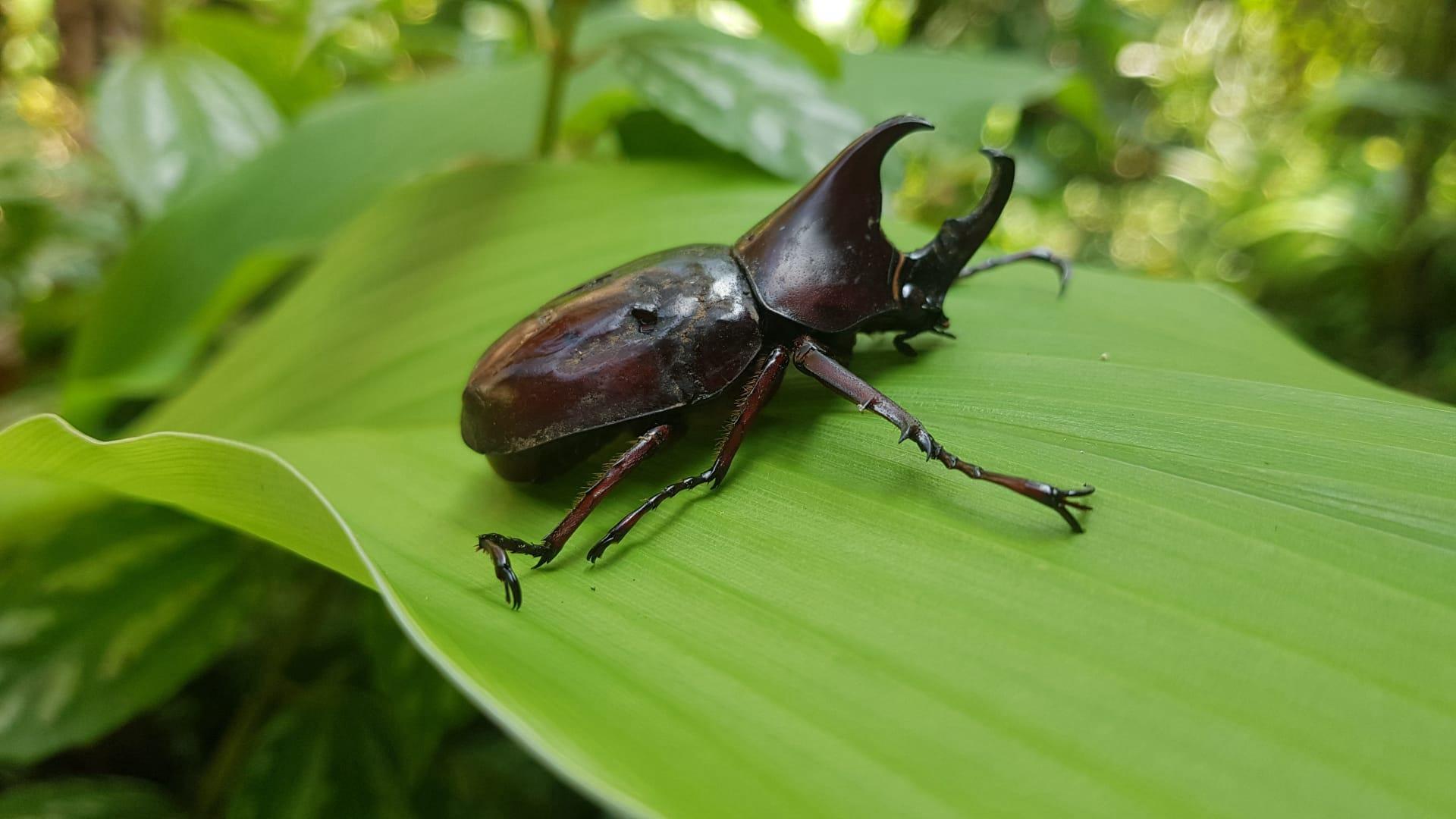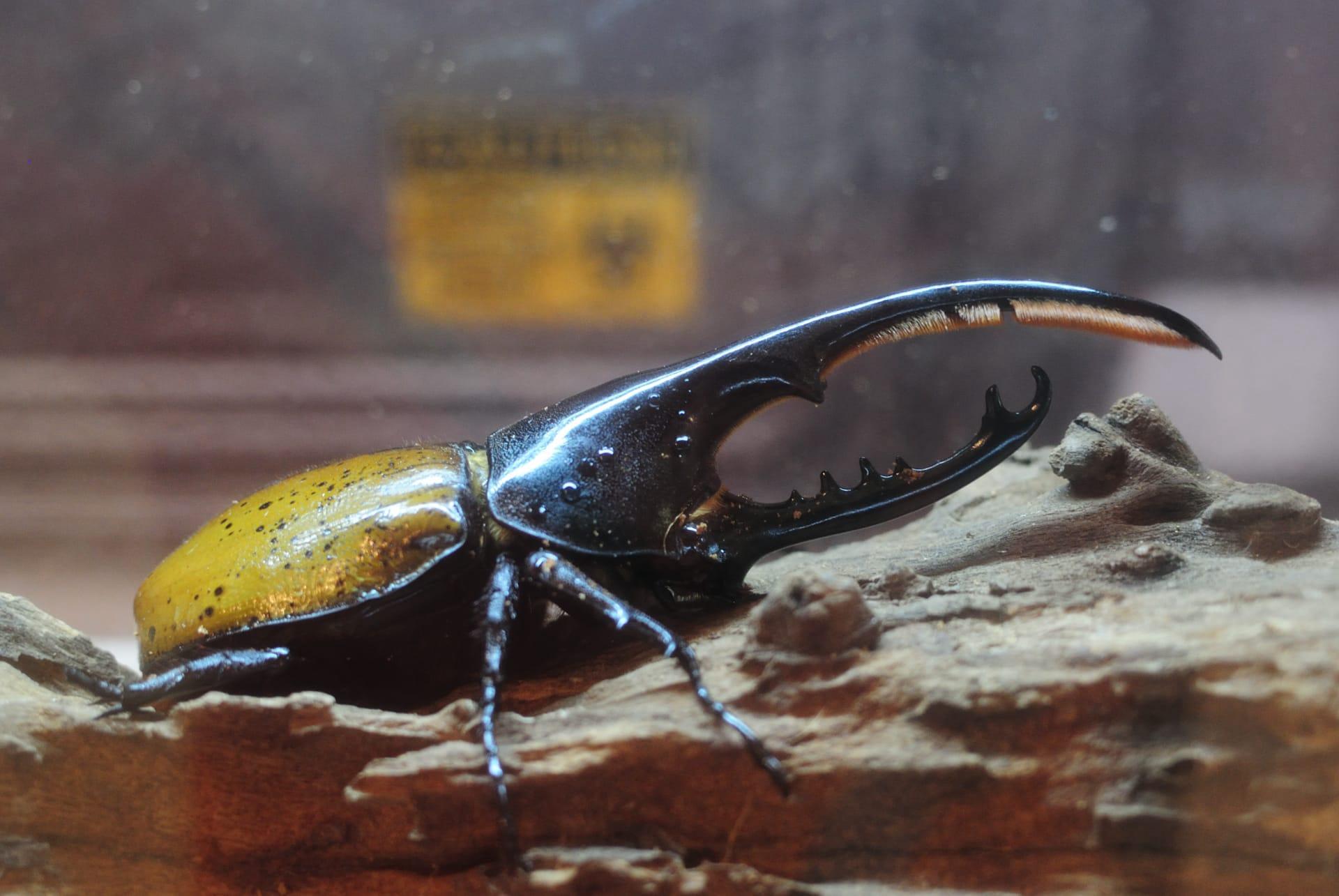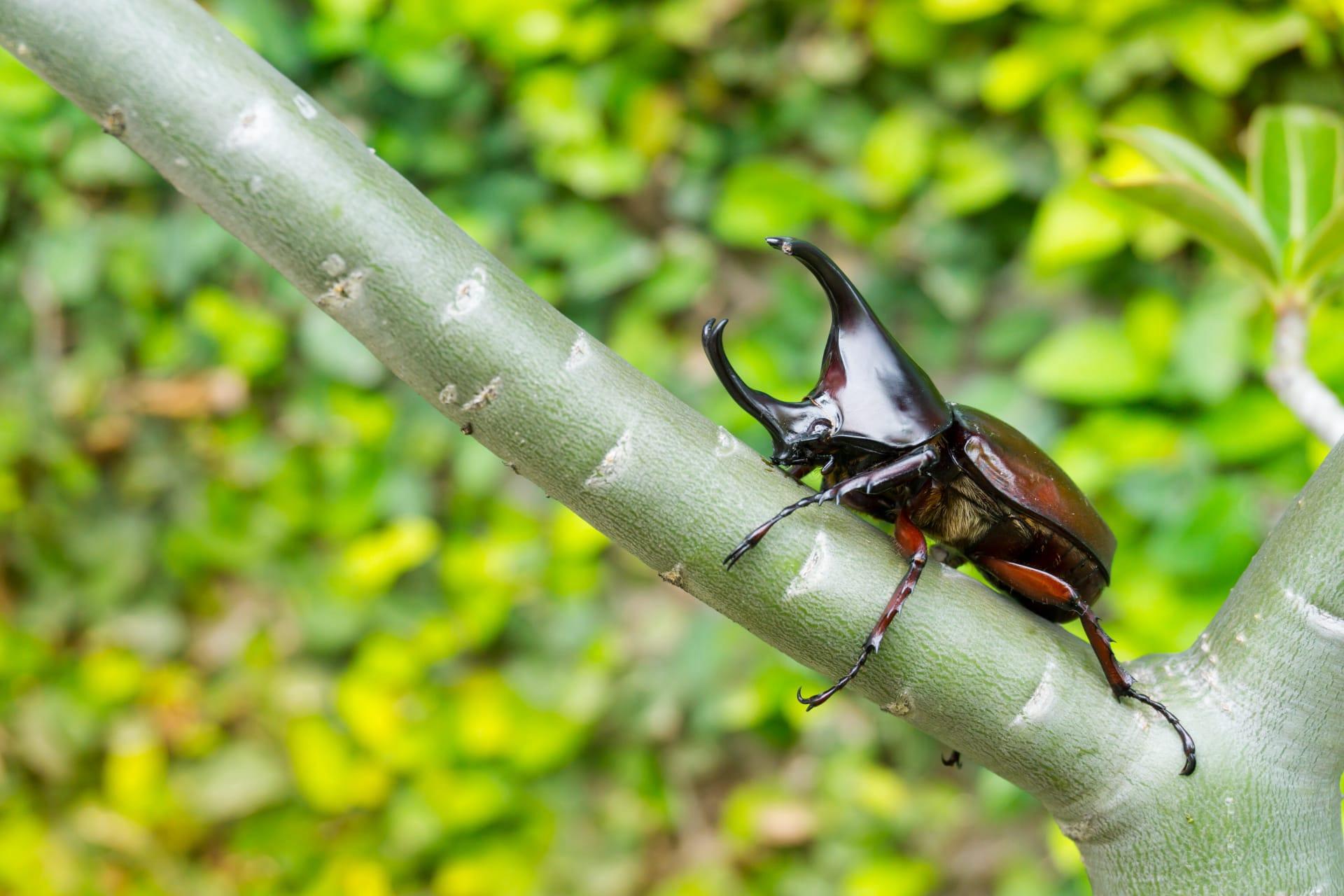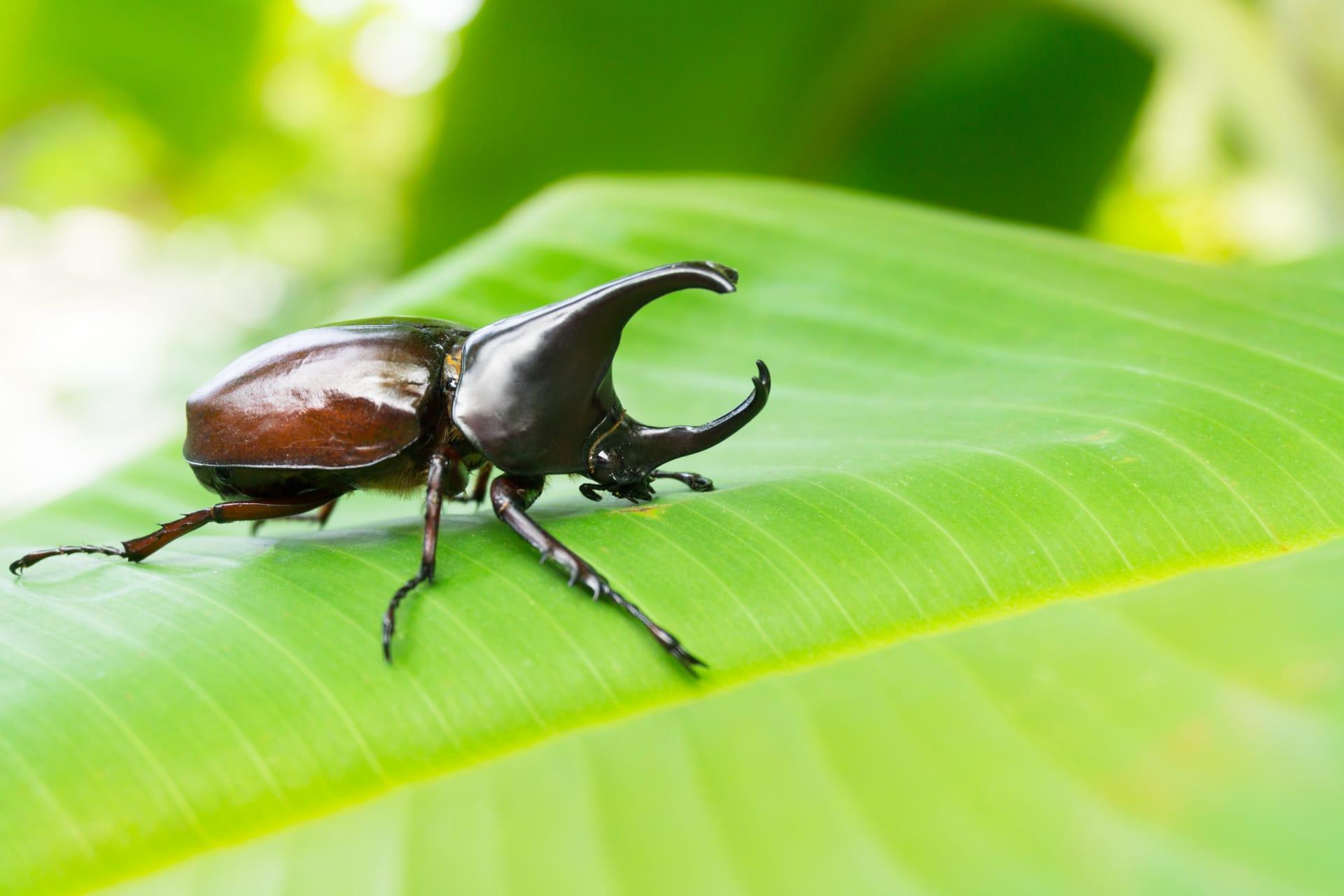Hercules Beetle
- Home /
- Mini Encyclopedia /
- Animal /
- Hercules Beetle
1
The Hercules Beetle, scientifically known as Dynastes hercules, belongs to the Scarabaeidae family, under the order Coleoptera, commonly referred to as beetles. This species is part of the Dynastinae subfamily, which includes some of the largest beetle species. The Hercules Beetle is particularly renowned for its impressive size, with males reaching lengths of up to 6.7 inches (17 centimeters) when including their horn. This extraordinary size ranks them among the largest of all beetles.
Hercules Beetles are predominantly found in the rainforests of Central and South America. Their distribution spans from southern Mexico to Bolivia, thriving in warm and humid tropical climates. These beetles favor environments rich in decaying wood and plant matter, which are essential for their development. The larvae stage, which can last up to two years, is typically spent buried in decomposing wood, highlighting the beetle's preference for forested areas with ample organic material.

2
Question: A common misconception about the Hercules Beetle is that they use their enormous horns for fighting predators. What is the truth behind this belief?
Answer: Contrary to popular belief, the large horns of male Hercules Beetles are not primarily used for defense against predators. Instead, these impressive structures are mainly used during mating season for combat with rival males. These battles are typically for territory or access to females. The horns are used to wrestle other males and flip them over, a show of strength and dominance. It's important to note that these encounters are generally non-lethal and more ritualistic in nature, emphasizing the beetle's focus on mating rather than aggressive behavior.

3
The Hercules Beetle employs several survival strategies that are key to its lifecycle. One notable strategy is their ability to play dead, a behavior known as thanatosis. When threatened, these beetles will often fall to their back and remain still, feigning death to deter predators. This tactic is particularly useful given their large size, which can make them conspicuous targets in the wild.
Another significant survival mechanism is the beetle's lifecycle adaptation. The Hercules Beetle undergoes complete metamorphosis, passing through distinct stages: egg, larva, pupa, and adult. The larval stage can last up to two years, during which they feed on decaying wood and plant matter. This long developmental period allows them to grow significantly, gathering the necessary energy and size for their adult stage. The adult beetles, however, have a shorter lifespan, usually ranging from 3 to 6 months, wherein their primary focus is reproduction.

4
In the ecosystem, the Hercules Beetle plays a crucial role, particularly during its larval stage. As larvae, they contribute significantly to the process of decomposing wood. By feeding on decaying trees and fallen logs, they help in nutrient recycling, facilitating the breakdown of organic matter and enriching the soil. This activity aids in forest regeneration and supports a healthy ecosystem.
The adult Hercules Beetles also serve as a food source for various predators, including birds, mammals, and larger reptiles. Their presence in the food chain indicates a balanced ecosystem. Additionally, these beetles, due to their size and unique appearance, are also essential in ecotourism and educational programs, drawing attention to the biodiversity and conservation needs of tropical rainforests.

5
Film: "The Secret World of Beetles" is a documentary produced in the United States in 2019. This film delves into the fascinating world of beetles, with a special segment dedicated to the Hercules Beetle. It explores their lifecycle, habitat, and the challenges they face in the wild, offering viewers an intimate look into the life of these remarkable insects.
Book: "Insects of the Rainforest" by John A. Davies, published in the UK in 2018, is an extensive guide to rainforest insects, including a detailed chapter on the Hercules Beetle. Davies discusses their biology, behavior, and ecological significance, providing insights into their role in tropical ecosystems.
Book: "The Giants Among Us" by Maria Gomez, released in Canada in 2020, focuses on the largest insect species globally, highlighting the Hercules Beetle. Gomez explores the evolutionary history and adaptations that have allowed these insects to thrive in their environments, offering a comprehensive and engaging view of these impressive creatures.